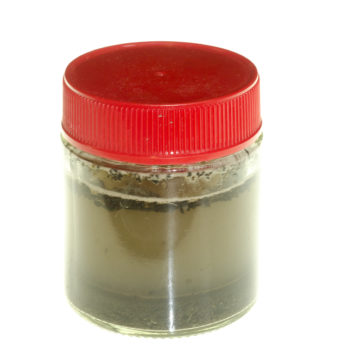Soil sedimentation test
This test gives an indication of soil structure, specifically the proportions of organic matter, heavy clay, light loam, sand, stones and rocks etc. It is very useful to carry out this simple test at a range of sites within your garden. For example, an old and well-used lawn is likely to differ from the soil beneath a compost heap or in an uncultivated orchard.
Conducting the test
Take an ordinary glass jam jar and put 4 tablespoons of soil in it. Top up with tap water and replace the lid. Shake the jar vigorously for 2 minutes, add a drop of dishwashing liquid, then and leave to settle. (Can take up to 24 hours). The brown flocculent components such as fragments of leaf and stem will float on the surface, the sand component may be next with clay below it and small stones at the bottom. Use a ruler to measure the depth of each of the layer you can detect and compare this with one or more other sites. The ideal soil will be of a predominantly loam consistency with a high proportion of organic matter, some sand and not too much clay or stony material.
To improve the quality of your soil, add as much organic matter as you can. Home-made or bought compost are ideal, or you can use various straws such as pea straw and even old newspapers. It is best to dig in these ingredients, especially if your soil is compacted. Note that newspapers placed only on the surface will blow away, as does pea straw. If you can get hold of linseed (flax) straw, it makes an ideal surface mulch in areas where you do not plan to cultivate such as around trees and shrubs. It is very high in carbon and low in nitrogen and is very tough to the touch. It will hang around for years without obviously degrading, contributing organic matter to the soil slowly as it decays. Earthworm populations in particular beneath this mulch will multiply spectacularly.


Project 1
As for many of the components of your kit, it helps to compare several regions of your garden, such as under fruit trees, a lawn, a vege plot etc. If you get on well with your neighbours, compare similar locations on their plot with yours e.g. compare the soil under their fruit trees with that under yours.
How Does Your Garden Grow Kit
This unique kit is based on research carried out in the Bio-Protection Research Centre at Lincoln University in association with the BHU Organics Trust and Kings Seeds. The kit will help you to discover a number of important things such as the acidity of your soil (slightly acid for potatoes, slightly alkaline for brassicas) and how to attract bees to your crops and ladybirds to eat your pests.
